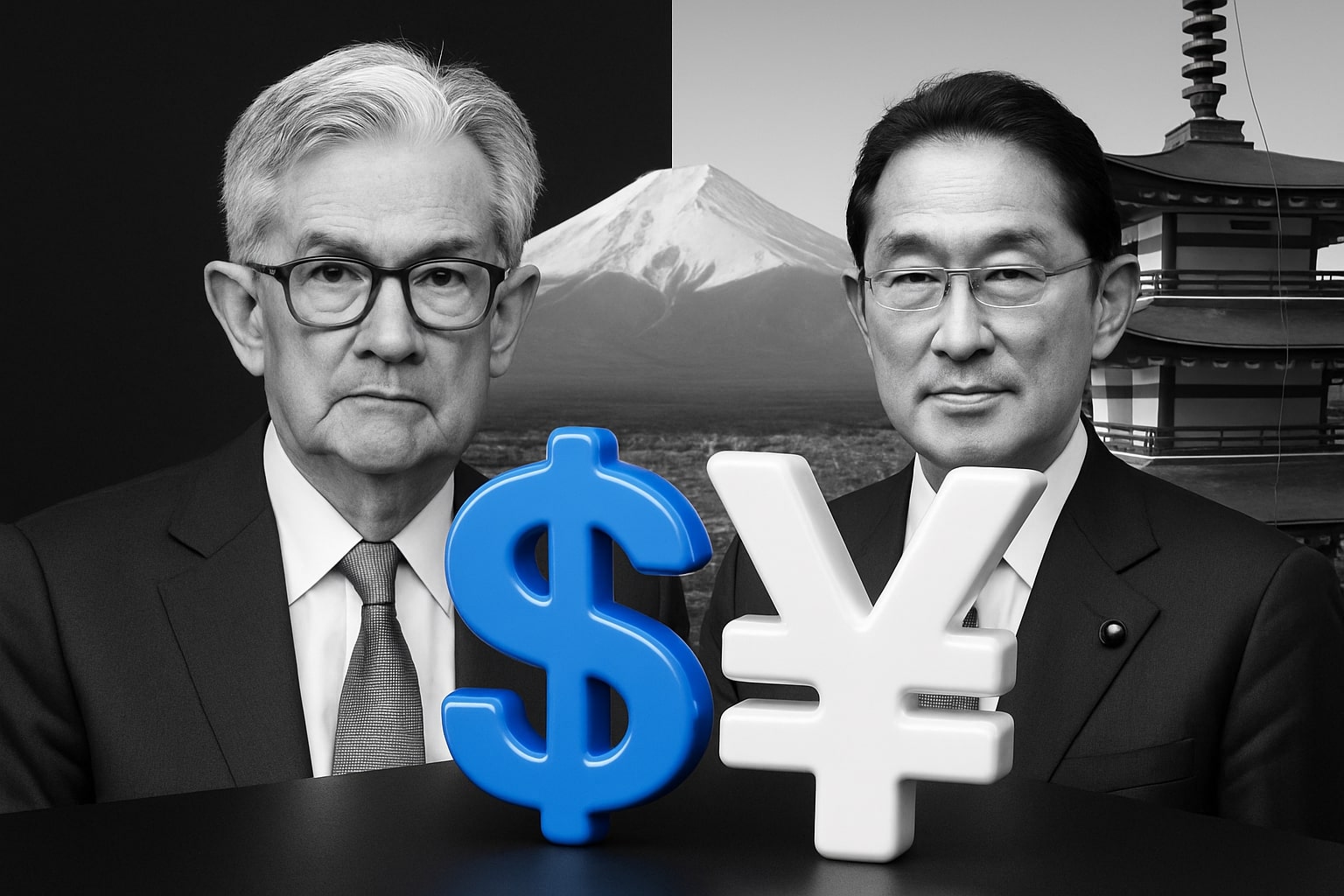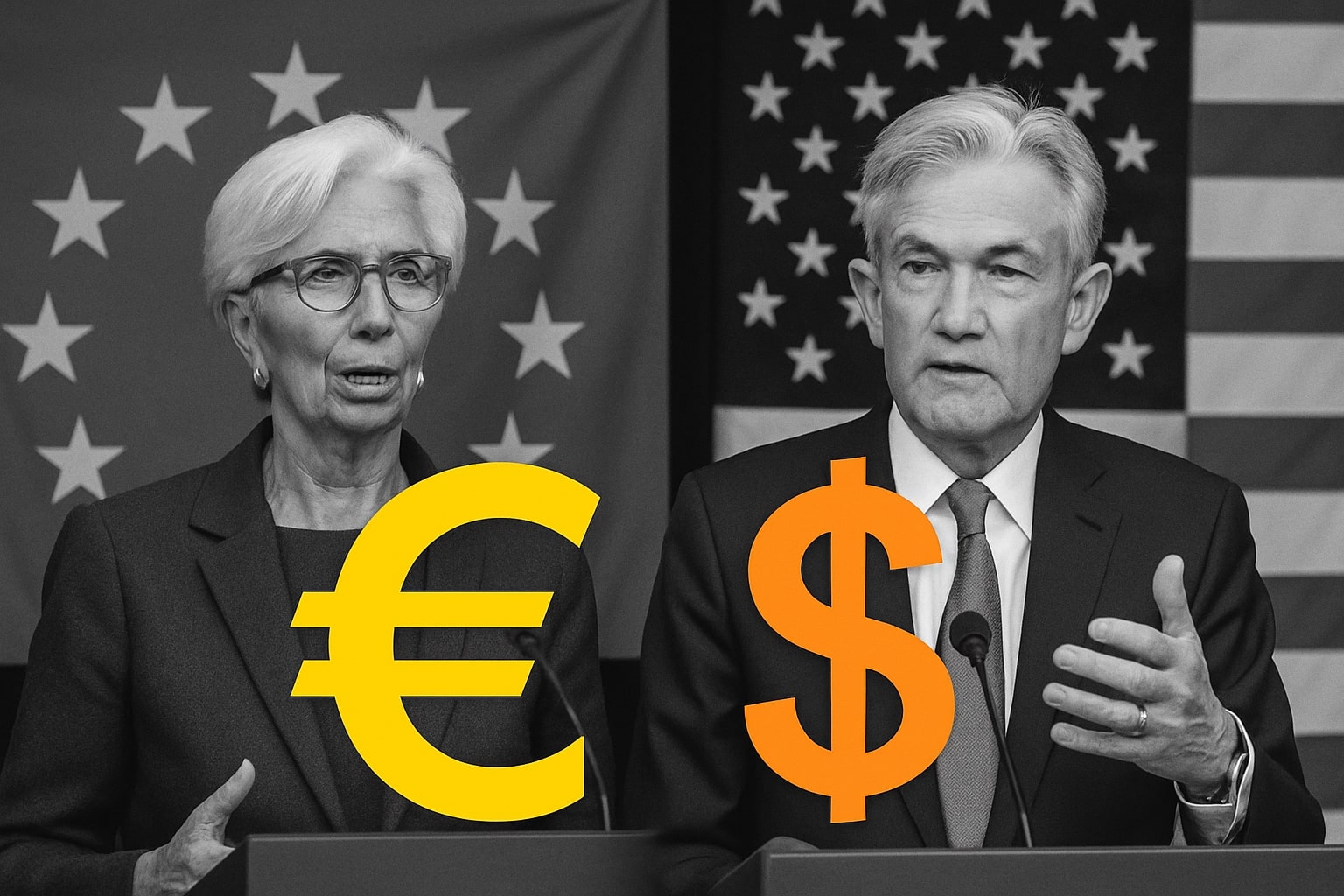
USD/JPY Price Forecast - Dollar to Yen Drops to 146.60 as Weak U.S. Data and BoJ Tightening Bets Lift Yen
Dollar weakens as rate-cut odds surge and Tokyo CPI stays above 2%. USD/JPY faces resistance at 147.70, support at 146.40 amid rising BoJ hike expectations | That's TradingNEWS
USD/JPY (USDJPY) Slides Below 147.00 as U.S. Data Weakens and BoJ Tightening Bets Grow
The USD/JPY pair retreated below 147.00, marking two-week lows near 146.60, as broad U.S. Dollar weakness gripped global markets. The correction follows disappointing ADP payroll data, showing a 32K job decline in September against expectations of a 50K increase, coupled with August’s sharp downward revision from +54K to a 3K loss. The soft labor picture amplified bets for a Federal Reserve rate cut in October, now priced at 100%, while the probability of another in December surged to 86% from 60% just a week ago. The U.S. government shutdown and waning fiscal momentum add further drag to the greenback’s outlook, deepening pressure across dollar pairs including USD/JPY, which now tests the lower end of its key short-term range.
Fed Easing and Political Tension Undermine Dollar Strength
Market pricing reflects growing anxiety about Fed independence as President Trump’s administration considers reshuffling key governors. The potential removal of Lisa Cook from the Fed Board and speculation about Chair Jerome Powell’s tenure after May have sparked fears of a dovish bias, weakening the policy credibility that supported the dollar through midyear. Swaps now imply 100 basis points of cuts by July 2026, front-loaded through two 25-basis-point moves before year-end. Beyond rate speculation, fiscal instability from the shutdown and rising Treasury issuance costs have tightened liquidity and curbed the greenback’s resilience, breaking the long-standing correlation between USD/JPY and U.S. yields that was fractured earlier this year by the “Sell America” episode following the Liberation Day tariffs.
Japan’s Policy Shift Adds to Yen Tailwinds
On the other side of the trade, the Japanese yen remains buoyed by the Bank of Japan’s hawkish policy pivot. The recent Summary of Opinions hinted that some board members advocated a rate hike as early as October, an uncommon stance under Governor Ueda’s leadership. Market odds of a 25-basis-point hike have climbed to 80% for November and are nearly fully priced for January 2026. Inflation momentum in Tokyo CPI readings, steady wage growth, and higher household consumption have strengthened the case for gradual normalization. The impending Liberal Democratic Party leadership election could reinforce policy continuity, as frontrunner Sanae Takaichi has signaled tolerance for modest rate increases to protect purchasing power. These dynamics make the yen a rare haven play amid global easing cycles, drawing renewed inflows into short-term JPY assets.
Technical Reversal: Double Bottom Formation and Range Compression
From a technical standpoint, USD/JPY has established a double-bottom pattern near 146.50, confirming interim support after repeated failures to breach 151.00 resistance since April. The average true range (ATR) has contracted to 109 pips, down from the 90-day average of 126 pips, reflecting volatility compression before a likely breakout. RSI oscillates near 52, suggesting neutral momentum with a slight bullish bias, while MACD has crossed the signal line from below, hinting at early accumulation. A sustained push above 147.73, the immediate slope resistance, would target the 1.618 Fibonacci projection at 147.84, followed by 148.90 and 150.25. Conversely, failure to defend 146.40 exposes deeper retracement toward 142.50 and 140.25, levels tied to the 2025 trendline base.
Macro Correlation and U.S. Yield Dynamics
The pair’s historic link with Treasury yields weakened earlier in 2025, but it is now slowly rebuilding. Ten-year yields trade near 3.88%, down from 4.21% in August, compressing the interest rate differential with Japan to around 370 basis points, the narrowest since early 2023. This narrowing erodes the carry-trade appeal that had underpinned dollar strength. The S&P 500 VIX index at 16.6 also signals a low-volatility backdrop, limiting demand for dollar hedges. As yen funding costs creep higher, speculative investors are unwinding risk-sensitive carry trades, pushing USD/JPY into a more rates-sensitive regime rather than a pure risk-on/risk-off correlation. That structural change has amplified price reactions to labor data and rate expectations rather than equity or volatility shifts.
Read More
-
MLPA ETF (NYSEARCA:MLPA) Holds $49.09 With 7.71% Yield And Rising Midstream Revenues Signal Further Upside
30.11.2025 · TradingNEWS ArchiveStocks
-
Ripple’s XRPI And XRPR ETFs Rise As XRP Hits $2.19 With $164 Million In ETF Inflows And 29% Supply Drop
30.11.2025 · TradingNEWS ArchiveCrypto
-
Natural Gas Price Forecast (NG=F) Breaks Higher Above $4.85 As Cold Weather and Record LNG Exports Drive a Bullish Winter Setup
30.11.2025 · TradingNEWS ArchiveCommodities
-
USD/JPY Price Forecast - Dollar to Yen (¥156.70) Surges Toward ¥160 as Japan’s Finance Chief Warns of Speculative Yen Moves
30.11.2025 · TradingNEWS ArchiveForex
Labor Market and Data Dependence: The Fed’s Weak Link
The Federal Reserve remains more responsive to labor weakness than inflation upside, a stance reinforced by Powell’s remarks on “low firing, low hiring” trends potentially foreshadowing higher unemployment. The September nonfarm payrolls release will be pivotal: another weak print could confirm a policy pivot, possibly justifying a 75-basis-point easing path before mid-2026. Despite resilient consumer spending and Q3 GDP tracking above 2.2%, inflation risks persist — led by service components — but have been downplayed as Fed officials prioritize employment stability. The disconnect between robust macro data and dovish market pricing has left the dollar vulnerable to repricing shocks; any upside surprise in job creation could trigger a sharp correction in USD/JPY toward 149.00–150.00 within days.
Japanese Economic Landscape: Inflation and Wage Spiral Developing
Japan’s inflation continues to edge above the 2% target, supported by corporate wage increases and stronger domestic demand. Tokyo CPI’s latest reading held at 2.6% y/y, while household spending climbed 3.1% y/y, sustaining pressure on the BoJ to normalize policy. The government’s fiscal stimulus, centered on wage subsidies and energy rebates, has moderated imported inflation but fueled internal price stickiness. Exports, up 2.8% y/y, remain resilient despite weaker Chinese demand, and real wages are improving. The BoJ’s next decision window in October could see an incremental move of +0.25%, aligning with expectations for two hikes by July 2026. This slow tightening contrasts sharply with Fed easing, deepening structural yen appreciation over the medium term.
Political Overlay: Fed Stability Versus Japan’s Leadership Vote
Politics loom large for both currencies. The U.S. government shutdown, now in its second week, has delayed key economic reports and disrupted short-term Treasury auctions, reinforcing dollar volatility. Meanwhile, in Tokyo, the LDP leadership race could solidify policy direction. If Takaichi secures victory, her pragmatic approach could mean continued coordination between fiscal and monetary measures, limiting JPY over-strength. However, an upset win by more conservative factions could embolden faster rate hikes, pressuring USD/JPY lower. These political crosscurrents make October particularly sensitive, as both Fed and BoJ navigate leadership uncertainty amid fragile global risk sentiment.
Historical Parallels and Rate Cycle Memory
The current setup mirrors late 2024, when markets prematurely priced aggressive Fed easing after weak payrolls data, projecting 250 basis points of cuts that never materialized. That mispricing fueled a powerful dollar rebound through early 2025. Similar risks exist now: if economic resilience persists and the Fed delays cuts, USD/JPY could once again surge beyond 150.00, punishing overextended yen bulls. Yet, unlike 2024, the BoJ is now actively participating in normalization, limiting asymmetry and flattening volatility.
Market Structure and Technical Range Probability
The pair’s dominant 140.25–151.00 range defines 2025 trading behavior. Probabilistic modeling assigns 65% odds to continued range-bound movement through year-end, 20% to a downside break driven by Fed credibility erosion, and only 15% to an upside breakout above 151.00, contingent on unexpectedly strong U.S. inflation and resilient payrolls. The 50-week SMA around 148.10 remains the first resistance checkpoint, while the psychological barrier at 150.00 coincides with multi-year highs last defended by direct BoJ intervention in 2022. The technical setup, including a hammer candle reversal after the last failed downside breakout, hints at near-term stability rather than capitulation.
Momentum and Volatility Framework
Momentum indicators have turned constructive: RSI(14) rising above 50, MACD histogram flipping positive, and Bollinger bands tightening around 147.20–148.00, signaling breakout potential. The pair’s implied volatility sits near 8.5%, below its 2024 average of 10.2%, suggesting compressed conditions that precede directional moves. Option flow data shows heavy concentration at 147.50 calls and 146.00 puts, a straddle structure implying traders expect a decisive break in either direction once key economic data clears.
Outlook and Tactical Bias
Short-term sentiment remains cautious but slightly tilted toward yen strength. The correlation between USD/JPY and U.S. 2-year yields (now at 0.74) suggests sensitivity to Fed repricing, while Japanese yields above 1% for the first time since 2012 confirm BoJ normalization traction. As the pair trades at 146.85, investors weigh whether the double-bottom will spark a rebound or simply form part of an extended consolidation before a new trend emerges.
Verdict: USD/JPY — HOLD, Neutral-to-Bearish Bias into Mid-October
Based on current macro dynamics, USD/JPY is rated HOLD with a neutral-to-bearish bias. Upside targets rest at 147.70–148.90 if U.S. data stabilizes, while downside risk extends to 145.80 and 143.50 under renewed Fed dovishness or BoJ tightening confirmation. With volatility poised to rise around upcoming payrolls and leadership events, traders should anticipate intraday swings of 100–120 pips as the currency pair tests its next structural pivot.



















